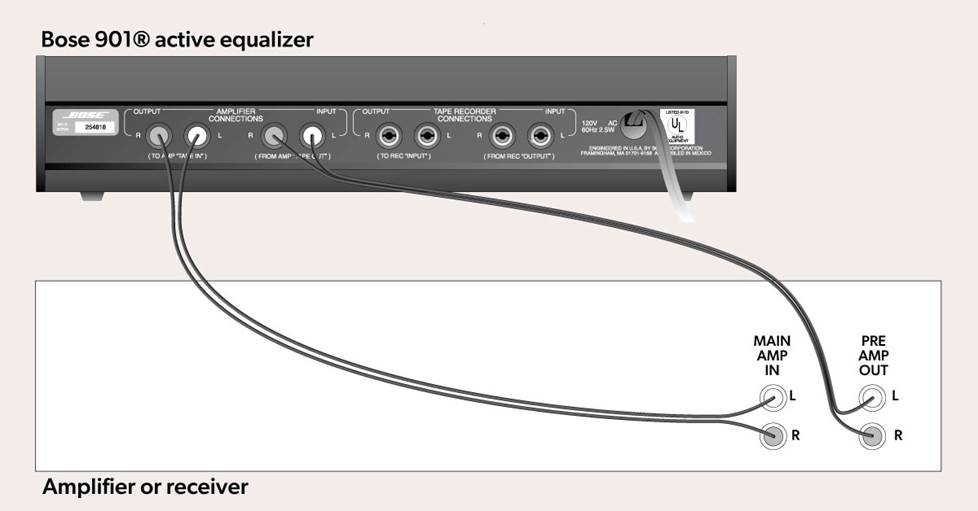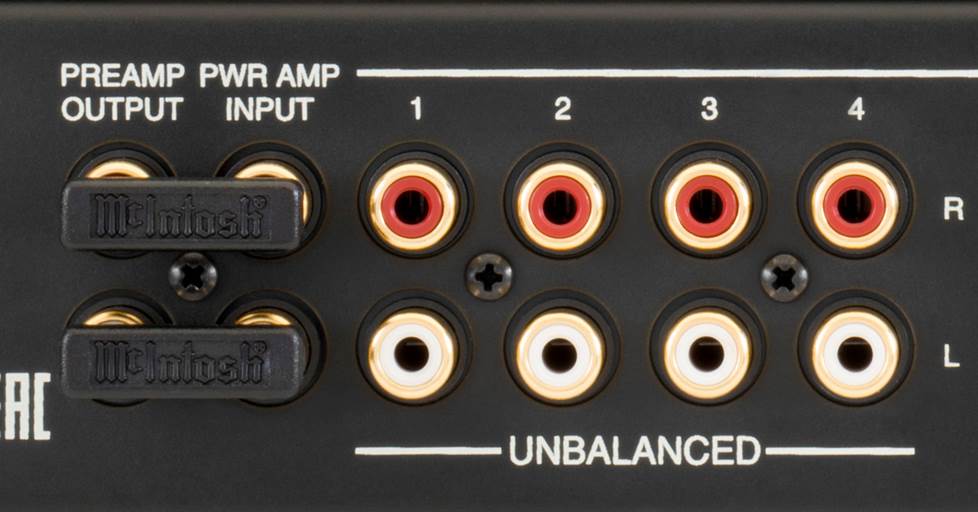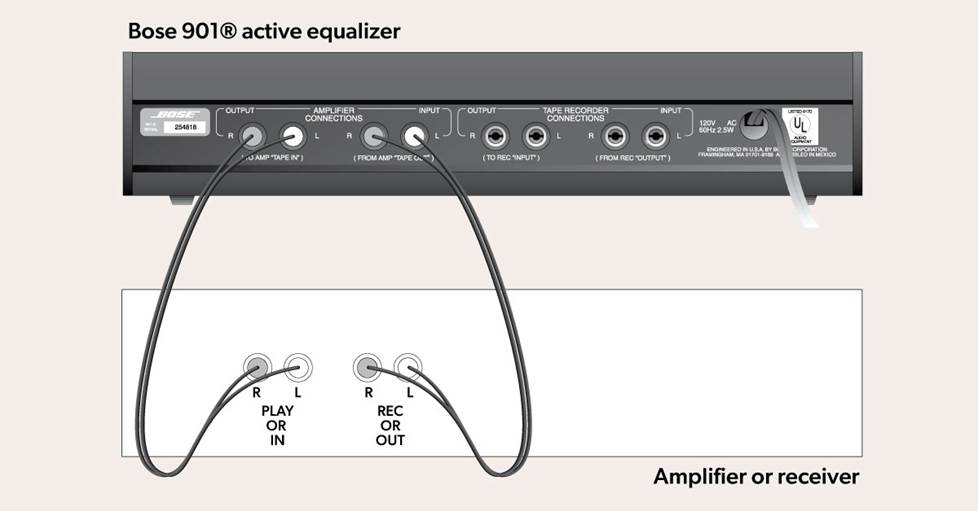Here ya go!
Three ways to connect the Bose 901 EQ to your stereo system
It’s a good time to be a Bose 901 owner, as there are many solid choices for amplification that make it easy to integrate the 901’s equalizer. This wasn’t the case just a few years ago, when it seemed like no home electronics had the capability to integrate with the Bose 901 system, unless you went with a separate preamp and amplifier combination. They were practically unusable with most integrated amps, stereo receivers, and of course, home theater receivers.
So, you have a pair of Bose 901 speakers, and you have the equalizer they came with. Here’s what you need to use them:
The Bose equalizer has a pair of analog RCA inputs, and a matching pair of outputs. You need to connect a pre-amplified signal to the inputs, the Bose EQ does its thing, then the outputs go to your amplifier. Once amplified, your music is sent to the speakers through speaker wires.
Connect to a separate preamp and amplifier
The most straightforward way to make the connections described above is to use separate components. You’ll need a stereo preamp and a stereo amplifier, two sets of RCA cables and some speaker wire. You can see how this works in the diagram below.

Connecting the Bose 901 EQ to a separate amp and preamp lets you customize your sound system. But it also means you need space for three different components.
One benefit of using separate components is that you can mix and match different amps and preamps to achieve the sound you want. And you can also replace one or the other if you want to upgrade, or if one of them goes bad.
Connect to a single stereo component
Using separates isn't super common these days as many people prefer a more integrated system. This can come in the form of an integrated amp or a stereo receiver. Both of these options include the preamp section and the amplifier in one component. Using an integrated amp or stereo receiver built to a high standard is a great way to condense your stereo system without sacrificing sound quality.
If you were using an average set of speakers (not the Bose 901s), you'd simply connect them to the amplified, speaker-level outputs of your integrated amp or stereo receiver. However, if you want to use the Bose 901 speakers and equalizer, you’ll need an integrated amp or stereo receiver with a special set of variable analog RCA preamp outputs AND a set of analog RCA inputs that go straight to the amplifier. These connections let you hook the Bose 901 EQ up in-line between the preamp and amp, even though the preamp and amp are in the same box.
There are two connection combos that make it possible to use the Bose 901 EQ with a single stereo component: a tape monitor loop, or a pre-out/main-in loop. Many of today’s integrated amps have the pre-out/main-in loop. The tape monitor loop is no longer very common, because, you know…tapes. I'll explain both below.
Pre-out/Main-in loop connections
Some components have pre-out/main-in loop connections specifically for hooking up a separate EQ. Back in the '70s, equalizers were commonly used in higher end home audio systems. An EQ could make analog sources (like tapes and vinyl) sound better. And it could also fix problems with the sound of the room that the system was in. Today we no longer use separate EQs, thanks to most sources being digital, sophisticated signal processing, and room correction software.

It's possible to connect the Bose 901 EQ to a single stereo component with pre-out/main-in loop connections.
The pre-out sends whatever source is being played to an outboard EQ, like the one included with the Bose 901s, using stereo RCA cables.
The main-in part of the loop receives the music as it comes back from the EQ and sends it on to the amplifier section of the component.

Stereo components with pre-out/main-in loop connections often come with jumpers that connect the pre-out to the main-in when no EQ is going to be used. These jumpers are removed if an EQ is used.
Tape monitor loop connections
A tape monitor loop works in a similar way. In fact, the connection requirements are identical. However, a tape monitor loop functions slightly differently than a pre-out/main-in loop. A tape monitor loop, as the name implies, allows you to monitor a recording, live, in real time.
Say, for example, you were recording a record from your turntable to a cassette so you could play the cassette in your car. The tape monitor loop would allow you to listen to the tape as it’s being recorded onto rather than listening to the record as it’s being played.
This is simply not needed with today’s digital solutions for recording vinyl onto a more portable digital medium. However, if you have an older integrated amp or stereo receiver with a tape monitor loop, your connections for the Bose 901 speakers and EQ would look like this:

You can connect the Bose 901 EQ to an older stereo component with tape monitor loop connections.
When Bose stopped manufacturing the 901 speaker system, the number of integrated amps and stereo receivers with compatible connections dwindled down to almost nothing. But many manufacturers have begun to add those pre-out/main-in loops back onto their integrated amps. Stereo receivers, not so much.
So, if you are looking to use a Bose 901 speaker system with modern electronics, you’ll want to look for a separate stereo preamp and amplifier combination that suits all your other audio needs, OR an integrated amp with a pre-out/main-in loop that does not exceed the maximum RMS power handling for your series of Bose 901 speakers.

